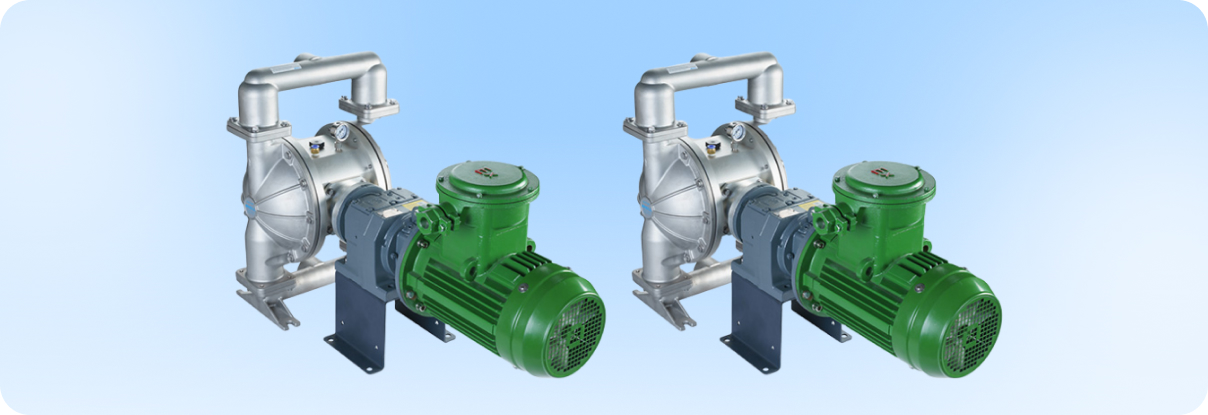
Mon - Fri: 9:00 - 19:00 / Closed on Weekends

AUS: +61 431 085 666
USA: +64 21 480 290


For decades, the air operated double diaphragm pump (AODD) has served as the industry standard for safe and versatile fluid transfer, particularly prized for its intrinsically safe design when handling corrosive chemicals and challenging viscous slurries. While AODD pumps remain a foundational industrial diaphragm pump solution, the electric diaphragm pump (EODD) has firmly established itself as the preferred alternative in operations where energy efficiency and total ownership cost are paramount. Both technologies are fully developed and widely available; however, the ongoing mandate across manufacturing to minimise operational expenditure (OpEx) and meet verifiable sustainability goals is increasingly driving the selection of the EODD. This choice is rooted in addressing the inherent inefficiency of compressed air systems by opting for the precise, direct-drive mechanism of the EODD, which provides a clear strategic advantage for long-term system optimisation.
While the air operated double diaphragm pump (AODD) remains an essential industrial diaphragm pump due to its safety in hazardous environments, its reliance on compressed air introduces considerable, often hidden, expenditure into the operational lifecycle. Compressed air is arguably one of the most expensive utility resources in any manufacturing or processing facility. Generating, filtering, and drying compressed air is an inherently inefficient process, with a substantial portion of the input electrical energy being converted into waste heat rather than kinetic potential.
The true cost profile of a pneumatic setup extends well beyond the compressor’s electricity bill. Several ancillary expenses compound the overall financial drain:
This collective inefficiency establishes a compelling economic argument for exploring technologically superior alternatives where direct power utilisation is preferred over secondary energy conversion. The air powered diaphragm pump remains vital for certain applications, but its OpEx profile warrants careful consideration.
The electric double diaphragm pump (EODD) fundamentally bypasses the energy conversion losses associated with compressed air systems. By employing a high-efficiency electric motor coupled with a precise gearbox, the EODD directly converts electrical energy into mechanical diaphragm actuation. This direct-drive principle offers unparalleled efficiency and immediate economic benefits.
The key advantages of the electric mechanism for lowering OpEx include:
This strategic alignment of advanced motor technology and intelligent control circuitry provides a robust framework for achieving the lowest possible energy input per volume of fluid transferred, thereby solidifying the EODD as the most cost-efficient technology over the pump's entire operational lifecycle.
The ability to precisely control the pump's output is perhaps the single greatest factor differentiating EODD from AODD technology from a performance perspective. The smooth, controlled stroke provided by the electric motor eliminates the rapid, often jarring, movement characteristic of pneumatic diaphragm pump systems, which has secondary benefits for maintenance.
The mechanical design of an EODD also offers inherent durability advantages that further reduce OpEx:
This simpler, more robust system reduces unscheduled downtime and allows for a more predictable maintenance schedule, leading to significant reductions in labour costs and parts expenditure.

Ovell Pump is a recognised specialist in high-performance double diaphragm pump and fluid transfer solutions, providing a comprehensive range of equipment engineered for the challenging demands of global industry. As a leading diaphragm pump manufacturer, Ovell assures its clients of dependable, compliant, and cost-efficient pumping solutions.
The company's diverse portfolio is designed to meet varied industrial requirements, encompassing standard utility pumps and highly specialised dosing machinery:
Ovell's strategic product development ensures clients benefit from an an optimised total cost of ownership across the entire product lifecycle, translating directly to reductions in operational maintenance and labour costs.
The selection of electric diaphragm pump technology is a strategic business imperative, driven by the clear financial and operational superiority they offer over traditional pneumatic diaphragm pump systems. For facilities committed to sustainability and stringent cost management, the EODD represents a fundamental step change in fluid management technology.
By making the transition to an electric diaphragm pump, businesses can anticipate:
Ultimately, by choosing advanced EODD technology, industrial diaphragm pumps operators are investing in a future-proof, efficient, and environmentally responsible fluid transfer solution that will reliably reduce OpEx for years to come.